HENRY'S DOOMED WIVES
Stories, legends and myths surround the building of Henry Flagler's railroad. The history that is most intriguing is Flagler’s marriages and the disbursement of his fantastic fortune.
Henry Morrison Flagler, who only had an 8th grade education and left home at the age of 14 to seek his fortune, would go on to become one of the wealthiest men in the world. With John D. Rockefeller he founded Standard Oil of Ohio.
In 1853, he married Mary Harkness. They had three children, Jennie Louise, Carrie and Henry Harkness. Unfortunately, only Henry Harkness would survive to have children.
By the 1870s, Mary Flagler had developed severe bronchitis, and her doctor ordered the hot, humid climate of Florida as treatment, especially during the cold winter months in New York.
The couple visited Florida in 1876, but Henry Flagler yearned for New York then the hub of business, and he refused to return. Despite her doctor's orders she would not go without her husband. She died May 18, 1881 from tuberculosis.
Did Henry Flagler feel any remorse for having perhaps hurried along his invalid wife's death is unknown, but it seems he had something else to distract him from the pricking of his conscience.
Like the script of a gothic romance novel, the 51-year-old Henry married his dead wife's nurse. Her name was Alice Ida Shourds, and she was 18 years his junior.
Ida was the daughter of an Episcopalian minister, who upon his death when she was child left them in poverty. She had a short stint as an actress and from there went into nursing.
Tongues wagged that she had been Henry's mistress before the wedding, which might explain why he overlooked her peculiarities.
They married in 1883, and honeymooned in St. Augustine, where he would eventually open the doors of his hotel The Ponce de Leon five years later, but in the meantime he had other worries. It came in the form of his new bride, when he realized her interest in spiritualism masked a woman who had lost touch with reality.
Alice as she was known by family and friends, was known for an acerbic tongue, which became more bitter and angry. On a New York yacht party she insisted on staying out to sea and continue with the celebration, despite dangerous weather having put everyone on board in peril.
She became obsessed with contacting the other side, revealing to friends that she would have to kill her husband in order to marry Nicolas II of Russia who was madly in love with her.
Strangely the Ouija board never mentioned that the Czar and his entire family would be executed by the Bolsheviks in 1918.
Alice Flagler not only spoke of the Czar, but her husband's infidelities as well. Both subjects considered verboten in polite society, spurred gossip that spread among the rich and powerful about Henry's mad wife.
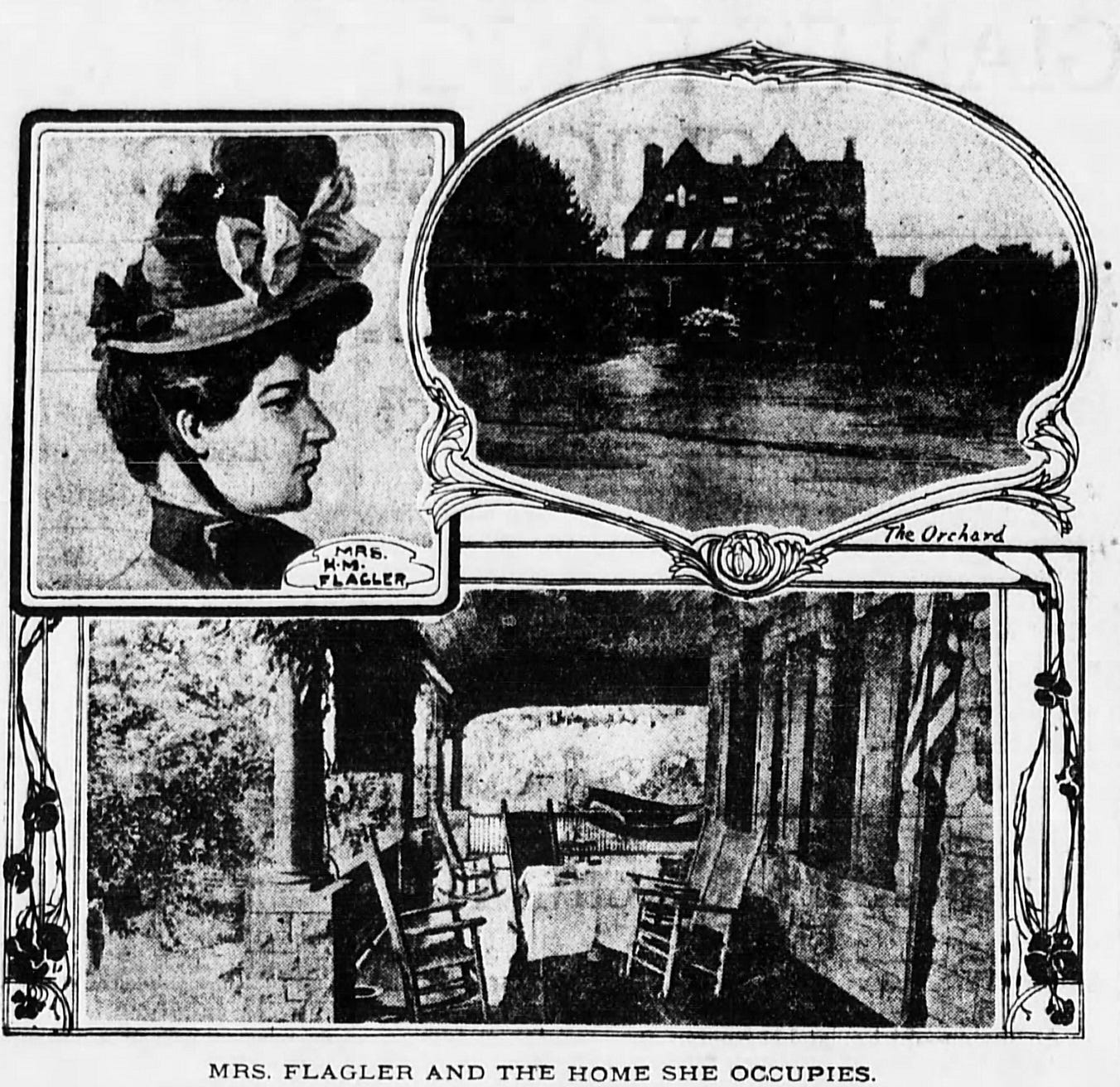
According to the book Florida's Flagler, Henry Flagler enlisted the aid of his doctor George G. Shelton who, "because of her glib tongue, Dr. Shelton made it a point to place himself in her presence” witnessing her diatribes. No doubt was Flagler planning to have his wife declared insane, and a doctor would need to establish this diagnosis.
Dr. Shelton had attended Flagler's daughter Jennie Benedict when she died from complications after childbirth in 1889. Flagler went on to build the Memorial Presbyterian Church for Jennie and her baby daughter Margery in St. Augustine. This left Flagler with only one child alive, his son Harry. He had already lost his other daughter Carrie in 1861, when she was three years old.
Meanwhile, Flagler began exploring business opportunities in Florida, and set his sights on making it the new “American Riviera.” Besides the Ponce De Leon in St. Augustine, he built the 1,100-room Royal Poinciana Hotel on the shores of Lake Worth in Palm Beach. Two years later, the Palm Beach Inn (renamed Breakers Hotel Complex in 1901) overlooking the Atlantic Ocean in Palm Beach was completed.
In 1895, Dr. Shelton came with two alienist to visit Mrs. Flagler. She became frantic, and based on their recommendation she was committed to the sanitarium at Pleasantville, and then kept for a time at Flagler's mansion, Satan's Toe on Orienta Point. Dr. Shelton attended her along with 10 servants. This was the last time Henry Flagler saw his wife Alice.
No doubt, Henry tired of her and her antics, and just like she distracted Henry when his wife Mary was dying, another woman soon caught his eye.
It was reported that Alice once went after her doctor with a scissors, but there is speculation that Mrs. Flagler’s symptoms were exaggerated in order to have her committed.
Eventually she came under the care of Dr. Carlos Frederick MacDonald the president of the New York Commission in Lunacy, and the state's leading alienist. He left this post to take over the Choate House, a private sanitarium that catered to wealthy clients only. He remained Alice Flagler's doctor until his death in 1926.
Dr. MacDonald specialized in the criminally insane. In 1889, he participated in the design of New York's first electric chair, claiming it was more humane than hanging. He practiced on dogs and horses. In 1891, he supervised the first 1500-volt execution of a prisoner at Sing Sing, noting that there was "no burning of flesh but some blisters..."
During these years, Henry was often seen in the company of Mary Lily Kenan. There was a 37-year old difference in their age, but Miss Kenan who was born in 1867, and fading into spinsterhood during the last decade of the 19th century would eventually marry him.
Rumors circulated that she gave birth to a love child in 1895 as a result of her affair with Flagler, which she gave to her married sister Jennie Wise to bring up.
In 1896, Flagler gifted Mary Lily with $1 million in Standard Oil stock, and her sister Jessie Wise with a house, a parcel of land and 200 shares of Standard Oil stock. Perhaps this was in repayment for taking care of his unacknowledged daughter named Mary Louise.
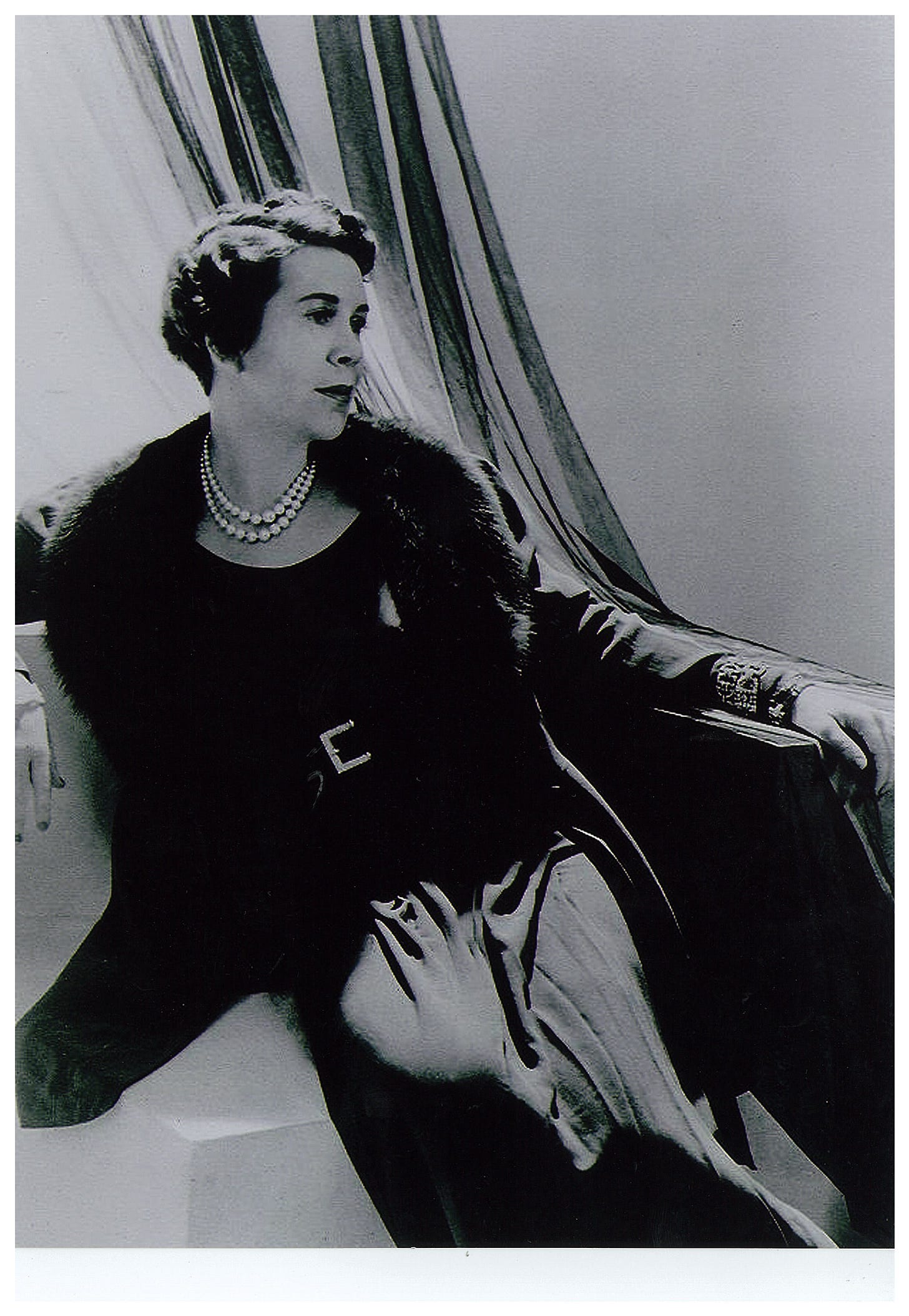
Securing a willing divorce from Alice Flagler he estimated would be impossible, since insanity could not be used as a reason to secure a divorce either in New York or Florida.
On May 12, 1901, a story appeared in the newspapers describing the salacious details of a divorce in which Henry Flagler was named as a defendant. Mr. Foote was seeking damages in the amount of $10,000 for the "alienation of the affections of his wife, Helen." Helen Foote was 28 years old and was admired for the "beauty of her face and figure."
In a small insert published by The Tampa Tribune on the same date it was noted: "The husband of a pretty New York woman is suing Mr. Flagler for alienating his wife's affections. This may furnish more work for the Florida legislature."
It seems that Alice Flagler might have been crazy, but she wasn't wrong when she described her husband as a philanderer of the first order.
The boatloads of money Flagler had poured into Florida paid dividends when a law was passed by the state legislature, which allowed him to divorce Alice. He had of course moved to Florida in order to be governed by its laws.
In March 1899, Ida Alice Flagler was declared legally insane. On August 14, 1901, Henry divorced her and set up a $1 million trust to care for her. Ironically Alice outlived them all, and died on July 12, 1930 from a brain hemorrhage. Her trust fund had increased in value to $12 million.
Two weeks after the divorce, on August 24, 1901, Henry married his mistress Mary Lily Kenan.
In 1902, Dr. MacDonald decided to move Alice Flagler to a mansion named The Orchard in New Rochelle. This was an effort to change her surroundings, and she lived there for the next two years.
A year later, Henry and Mary Lily came to stay at their home on Orienta Point only four miles away. He was suffering from lumbago, and she had a "nervous disease".
Alice Flagler was described as still young and beautiful though white-haired. "She still believes she is engaged to the Czar of Russia, however on all other subjects she converses rationally. To one unacquainted with her delusion, if the subject is not brought up, Mrs. Flagler appears perfectly sane."
Eventually Alice Flagler was moved to Dr. MacDonald's private sanitarium known as Dr. MacDonald's House. He was paid handsomely from her trust through the years. In 1912, The New York Sun reported, "Mrs. Flagler makes frequent trips to New York and attends the opera in the winter."
In 1906, Dr. MacDonald would see himself embroiled in the trial of millionaire Harry Thaw, who killed architect Stanford White over the affection of his wife Evelyn Nesbit, who was once White's mistress.
In the meantime, Henry Flagler gifted his new bride Mary with a 60,000 square foot, 55-room mansion in Palm Beach known as Whitehall. It was the work of two of America's greatest architects, John Merven Carrere and Thomas Hastings.
The luxurious ballroom had a nearly invisible door that led to a secret staircase that would allow Henry Flagler to leave to the comfort of his bedroom, while his wife continued to entertain their guests into the wee hours.
It was on these steps that he took a fall that led to his death in 1913, at the age of 83. He left his widow a fortune worth $108 million. He was laid to rest next to his first wife Mary Harkness.
Mary Lily Kenan Flagler had her own unique family history.
The Kenan family settled in the Cape Fear River area in the 1760s. They helped to establish UNC at Chapel Hill.
Another family who came to the area in the 1780s was the Binghams. Like the Kenans they fought in the Revolutionary War and owned a plantation at Cape Fear.
Mary Lily's brother, William Rand Kenan Jr. and Robert Worth "Rob" Bingham were close friends and belonged to the Order of the Gimghouls. It had been founded in 1889, based on the legend of Peter Dromgoole, a student who disappeared from the campus in 1833. Both of them attended UNC.
The Gimghouls centered itself on the legend of Peter Dromgoole, a student who mysteriously disappeared from campus in 1833. Described as a social organization, versus a secret society, its watchwords were “midnight, graves and weirdness”.
Rob Bingham was described as a "lady killer" and in 1890 at a dance he started a torrid romance with Mary Lily Kenan, however there appeared to be a family feud between the Binghams and the Kenans, and the relationship ended.
It was after this that Mary Lily Kenan became involved with Henry Flagler who was still married to Alice.
Bingham when on to attend the University of North Carolina, and the University of Virginia without graduating. He then went to Louisville, Kentucky.
In 1896, he married Eleanor Miller who came from a wealthy family, and who was politically prominent in Louisville. The next year he received his degree in law from the University of Louisville. In 1911, he was appointed to the Jefferson Circuit Court, and was known as Judge Bingham for the rest of his life.
His wife Eleanor committed suicide in April, 1913 by jumping out of the car she traveled in as it crossed railroad tracks. She was accompanied by her brother Dennis Long Bingham, who was driving the automobile, and her 3 children witnessed her horrific act. She died later in the hospital after "an eastbound Louisville and Interurban car struck the big six-cylinder automobile at O'Bannon Station." She was 42 years old. Her father Samuel Miller had ended his life the same way 19 years before.
Three weeks later, Henry Flagler died from a fall where he broke his hip. Mary Flagler became a widow, and one of the wealthiest women in America.
Judge Bingham, now a widower was buried in debt, which perhaps explains why he looked up his old lover.
They married in November, 1916, in a private ceremony with Louise Wise as her only attendant. Mary Flagler had publicly named her "niece" as heiress to the bulk of the Flagler fortune.
Before the wedding Bingham signed a prenuptial agreement, giving up claim to the Flagler fortune should his wife die before him.
Before long, the 50-year-old Mary Bingham started to complain of chest pains. Her new husband, instead of calling a heart specialist, brought in his friend Dr. Michael Leo Ravitch, a dermatologist to treat his wife.
In the book, The Binghams of Louisville: The Dark History Behind One of America’s Great Fortunes (1989), it describes where they took her to a hotel, and treated her with doses of morphine. They moved her back home, and Ravitch continued to treat her with increasing doses of morphine.
Then Bingham brought his lawyer and fellow Gimghoul, William Davies into the picture. He oversaw Mary Lily altering her will by a new codicil which left $5 million to her husband in the event of her death. This was contrary to the investment fund she had originally planned for him.
Within eight months of her wedding Mary Lily Flagler Bingham was dead. She fainted in her bathtub, endured convulsions and died. Even after she was unconscious, she was given more morphine. Her body contained the opiate in abundance, plus traces of adrenaline and arsenic.
Her family suspected foul play and arranged to exhume her body at midnight from a Wilmington cemetery. Three pathologists were hired to complete an autopsy at New York's Bellevue Hospital. The family promised to make public the report, but instead locked away the findings. Speculation ran wild, and some believed Mary Bingham was addicted to laudanum and had overdosed.
Another rumor that circulated was that Robb Bingham threatened to tell the press that she had died from complication of syphilis if they continued to interfere, as well as her taste for brandy and bourbon. He used Shepard Bryan, another Gimghoul as a go-between with the Kenan family.
Ironically it was believed Mary Lily contracted tertiary syphilis from Bingham who had been infected while attending college. In those years, dermatologists treated syphilis, which would account why Ravitch was his personal physician.
The reason given for her death was "acute heart disturbance", but this did not quiet whispers that spoke of murder and malpractice.
With the money he inherited Bingham purchased The Louisville Courier newspaper.
In 1932, he was appointed to serve as ambassador to the Court of St. James. He died five years later from Hodgkin's disease and/or syphilis according to Sallie Bingham, his granddaughter. Apparently she gained access to the second autopsy report that concluded Mary Lily died from an overdose of Salvarsan used to treat syphilis.
Allegations of murder haunted Bingham for many years.
Robert Bingham would go on to marry a third time. Her name was Aleen Lithgow Hilliard, the widow of a wealthy stockbroker. She outlived him by 16 years.
Sallie wrote that Judge Bingham bought the newspaper "to ferret out other people’s secrets while closely guarding our own. (Mary Lily) died … of a combination of causes that included depression, neglect and medical incompetence, the failure of love, isolation, and a heart probably weakened by the syphilis she had contracted from the Judge… She also died because she would not, for a long time, give the man his money.”
Emily Bingham, Robert Bingham's great-granddaughter wrote in her book that "Roosevelt himself gleefully called his ambassador 'my favorite murderer'". She also described where Dr. Ravitch demanded money from Bingham, writing, "I am really sorry that I ever consented to do for you what I did."
Judge Bingham's great grandson Robert Worth Bingham IV, died from a heroin overdose in 1999. He was 33 years old. His father, Robert Worth Bingham III, was killed in a freak accident in 1966. One summer morning, while vacationing with his family in Nantucket, he decided to drive to the beach to surf, placing his board horizontally across the backseat of his convertible. When one protruding end hit a parked car, the whole surfboard swung around and crushed his neck.
Louise Wise, Henry Flagler’s “favorite niece,” inherited Whitehall in Palm Beach, Kirkside in St. Augustine, money and securities. In 1920, Louise and her husband, Lawrence Lewis Sr., named their baby daughter Mary Lily Flagler Lewis and called her Molly.
She died in 1937, age 41 from what was described as a heart attack, but which was suspected was a result of a drug overdose. That same year she set up the Flagler Nursey School for Underprivileged Children in St. Augustine.
Molly at one time was a principal of the company that owned The Breakers. When she died at age 90, her two sons lived in Virginia.
Henry Flagler's son, Harry Harkness Flagler was a businessman and philanthropist who spent his life promoting the New York art scene. He was the president of the Symphony Society of New York starting in 1914, one of many positions he held throughout his life. He gave money to the Symphony Orchestra to make it the first American orchestra to tour Europe.
He married Annie Louise Lamont in 1894. She was a millionaire heiress in her own right. They had three daughters, Mary, Elizabeth and Jean. They remained married until Annie's death in 1939.
There were rumors that a rift opened up between Harry and his father, when Henry Flagler married Ida Shourds. Harry as the youngest of his siblings was 11 years old when his mother died, and 13 when his father took a new bride. Perhaps he felt it was a betrayal of his mother's memory.
There was another argument when he was an adult, when it seems he didn't demonstrate any interest in his father's railroad and Florida interests. It was said father and son had little to do with each other after this.
He died in 1952 at the age of 81.


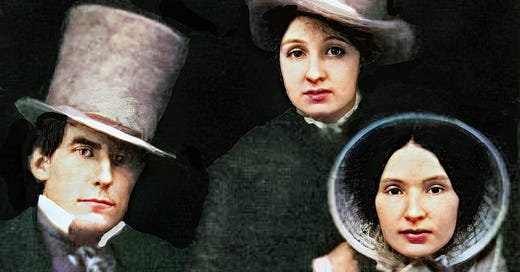



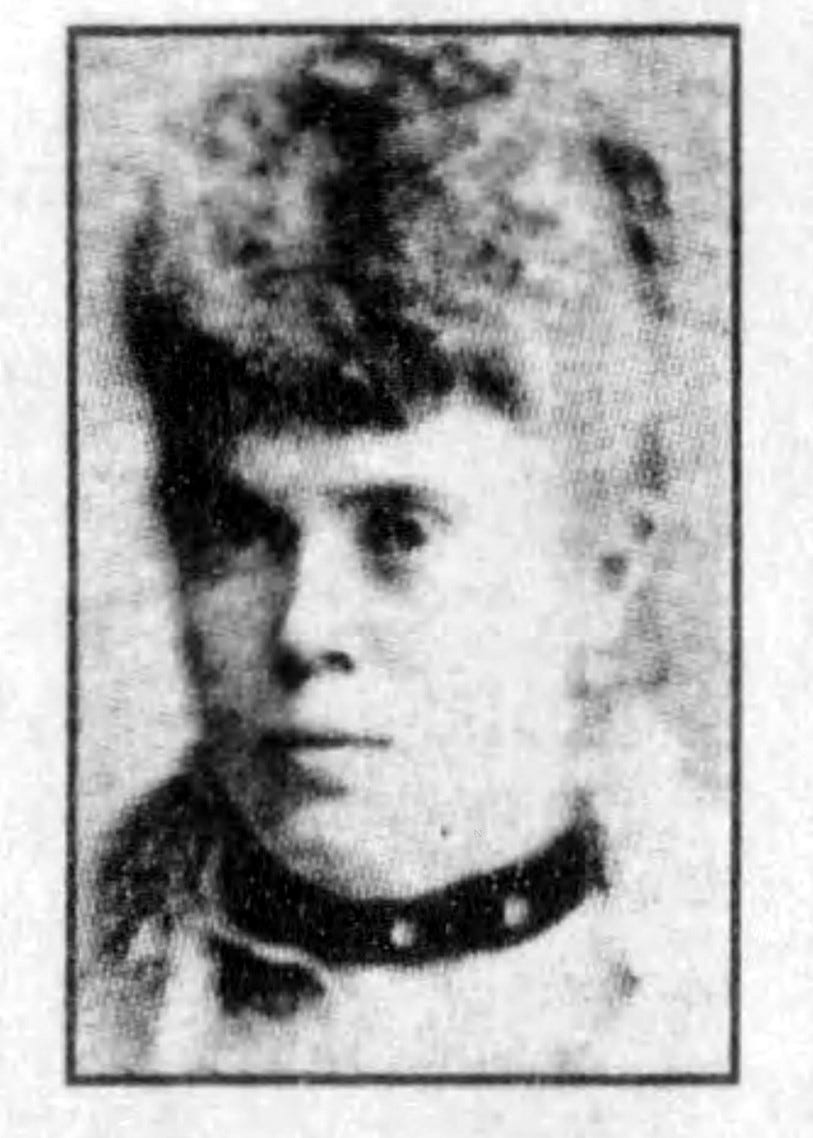
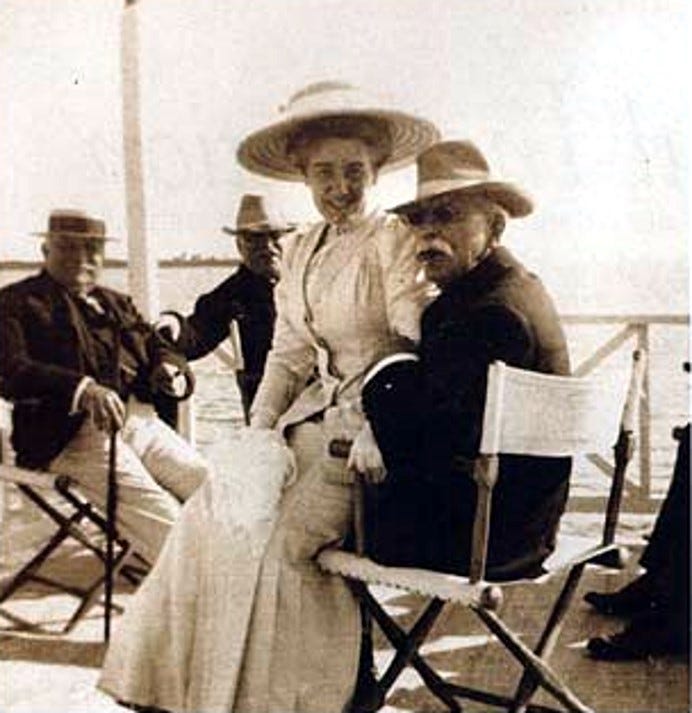

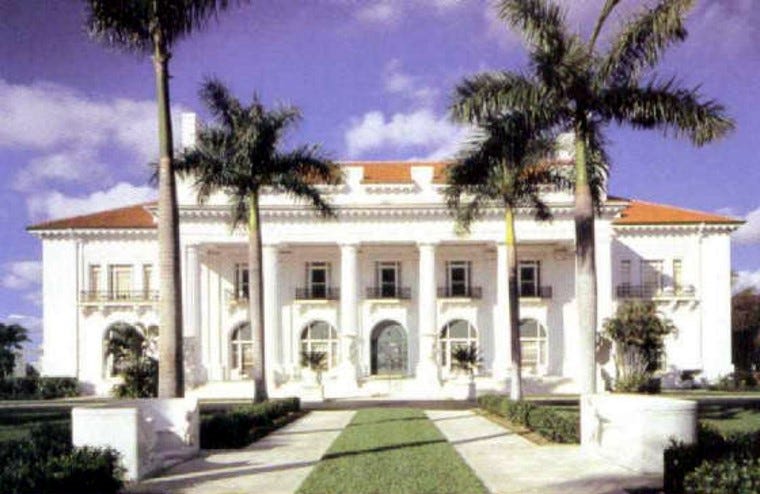
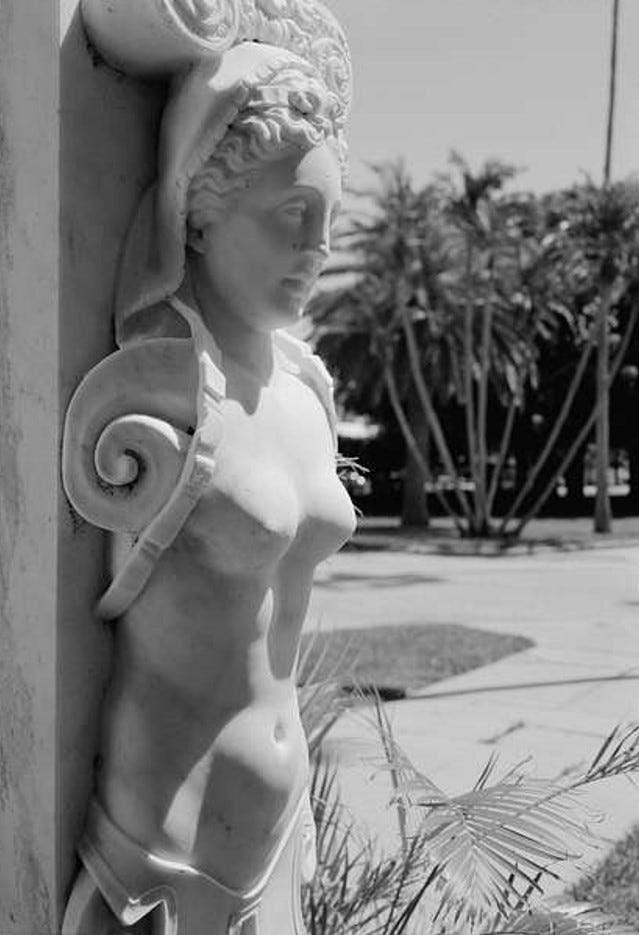

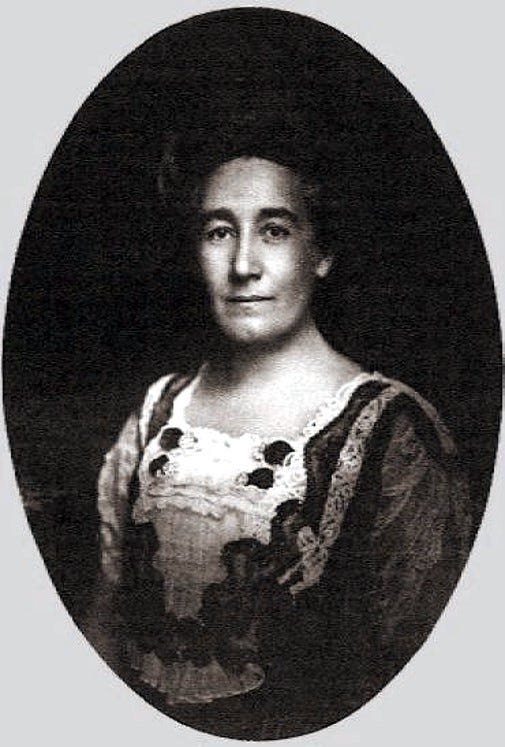
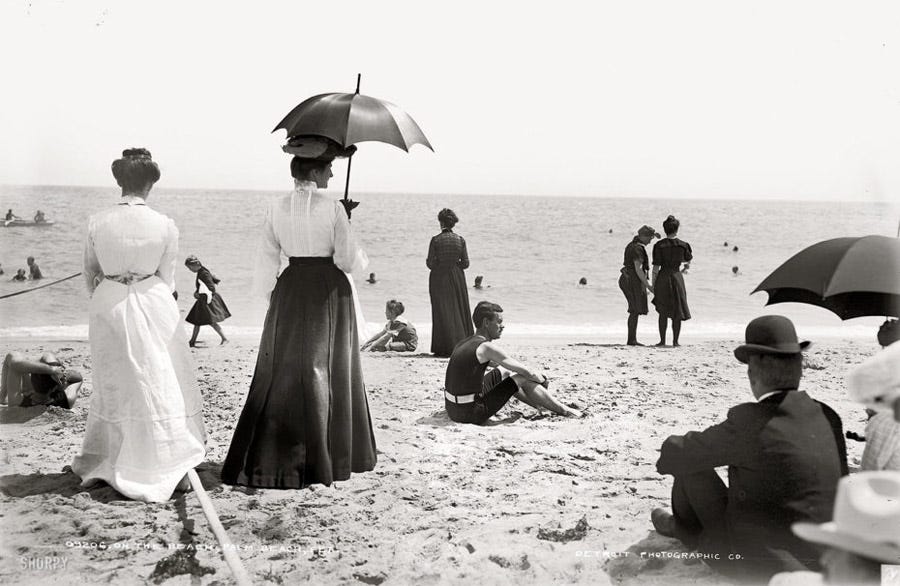
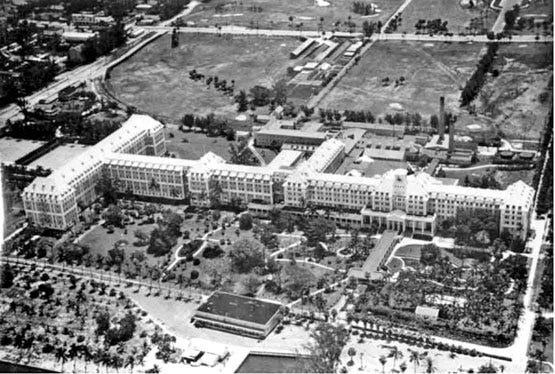
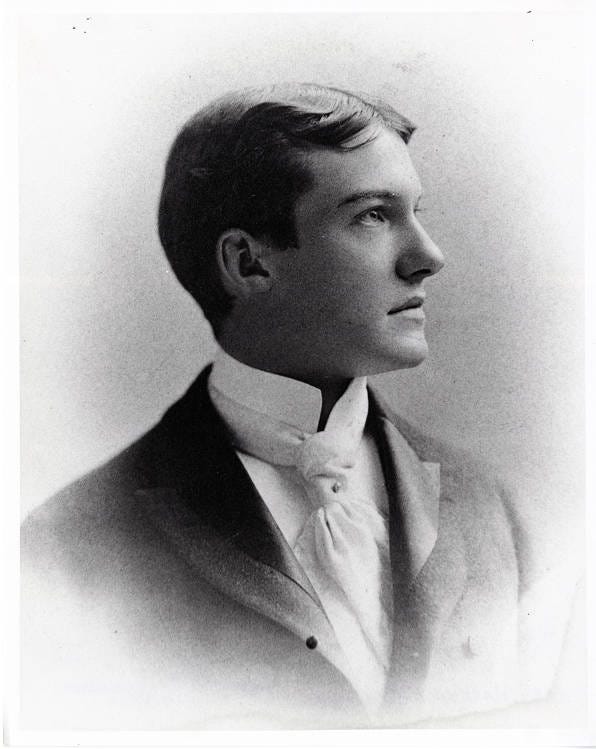
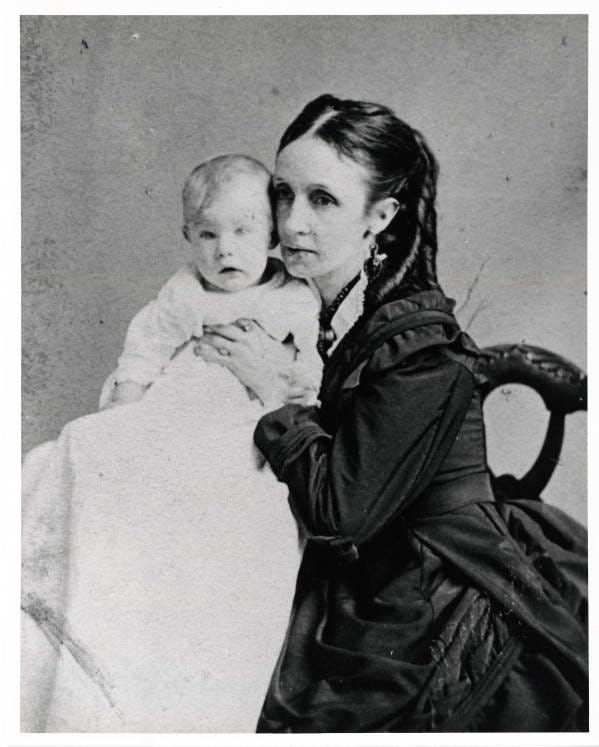
Fascinating story. I work in the former Hotel Ponce De Leon and stories like this always interests me. Thanks for your work and for sharing!